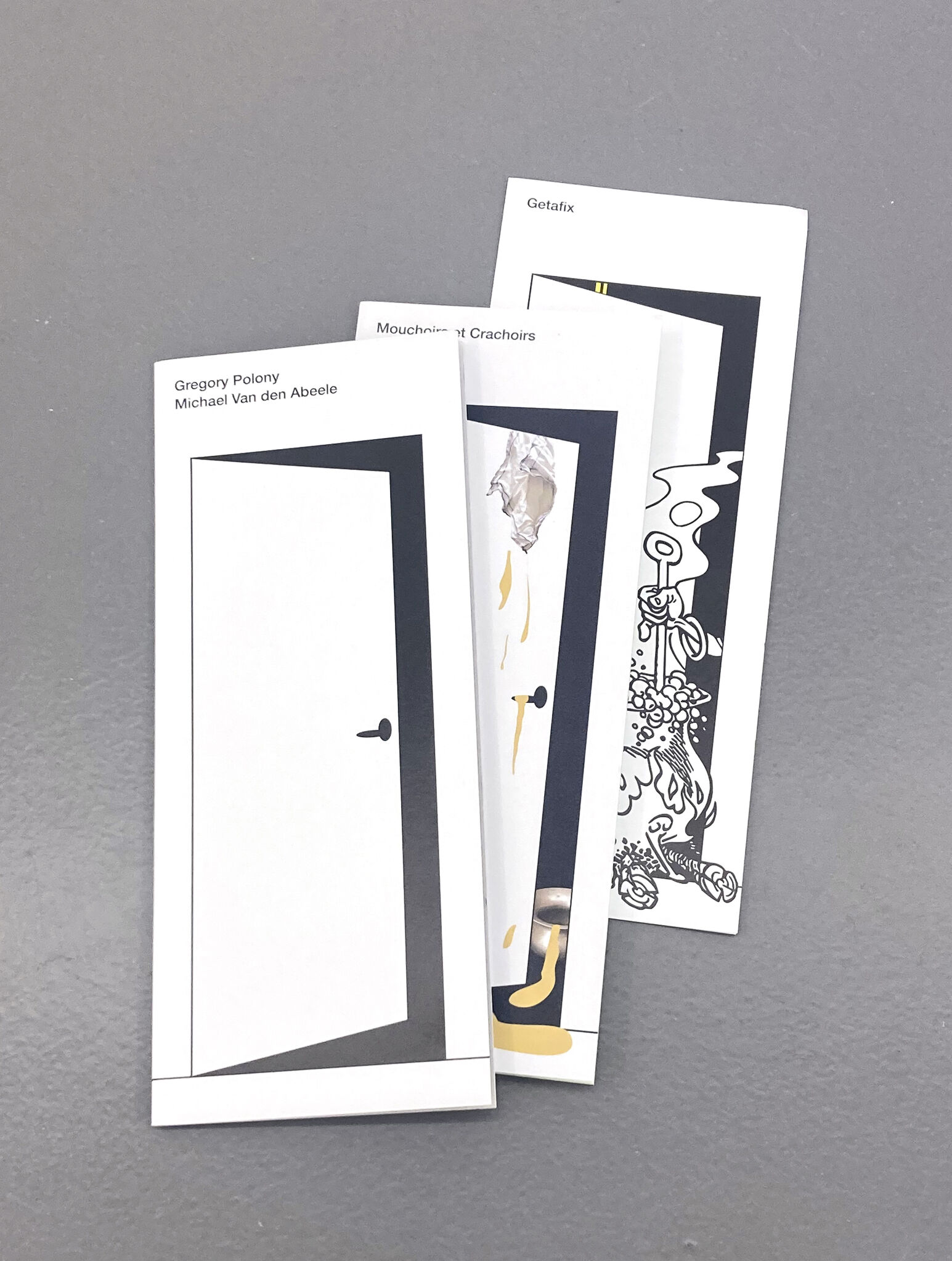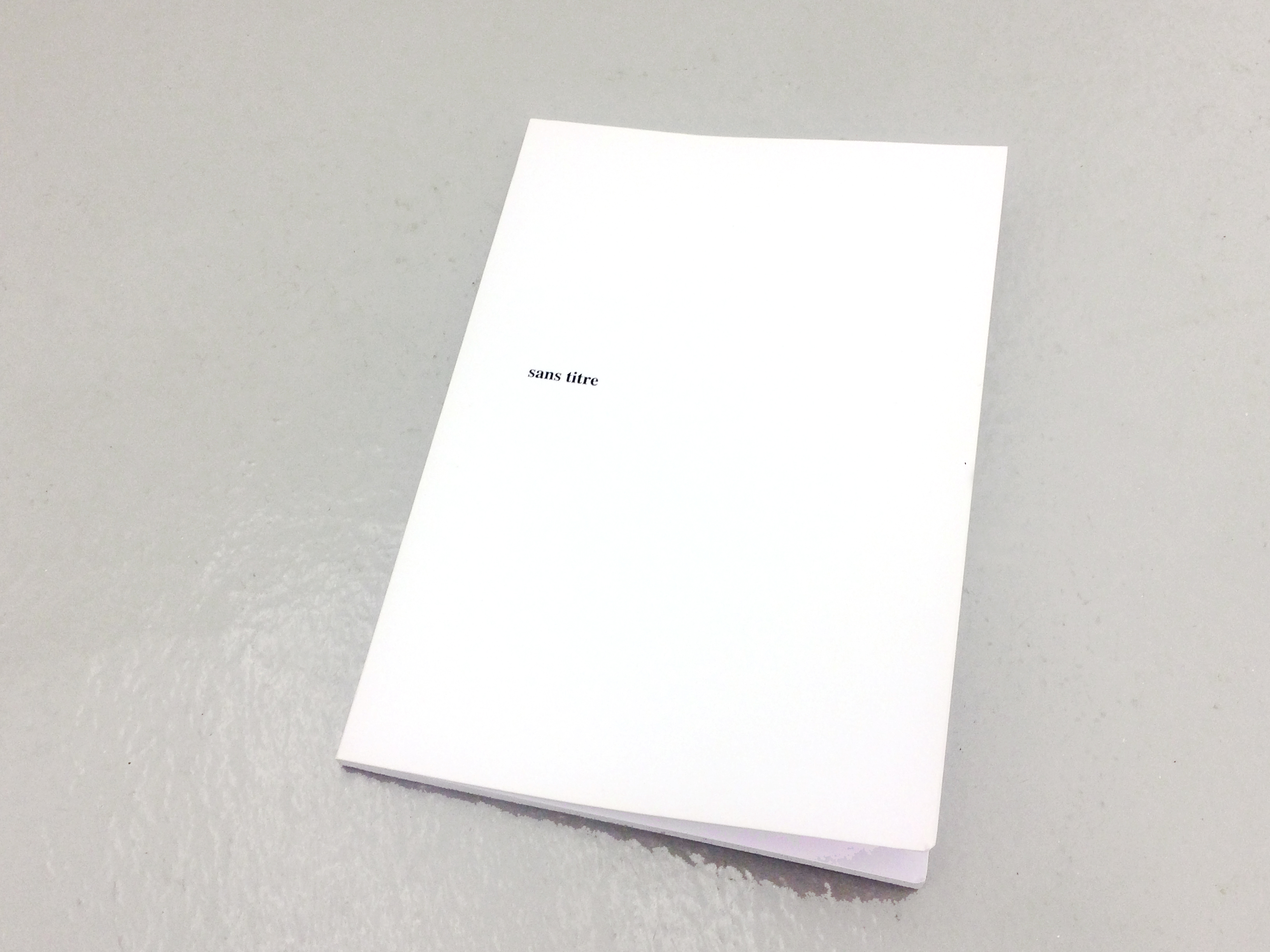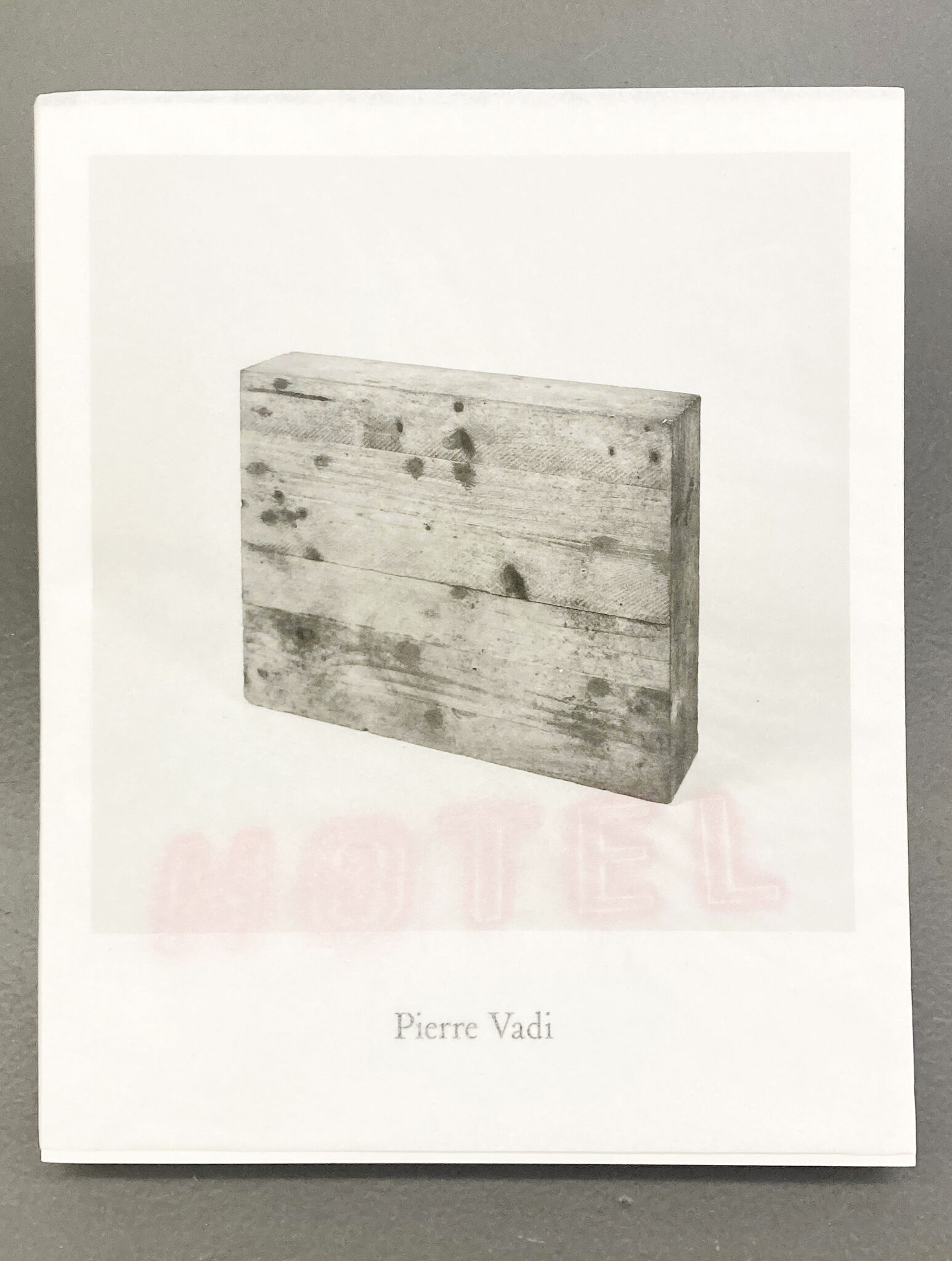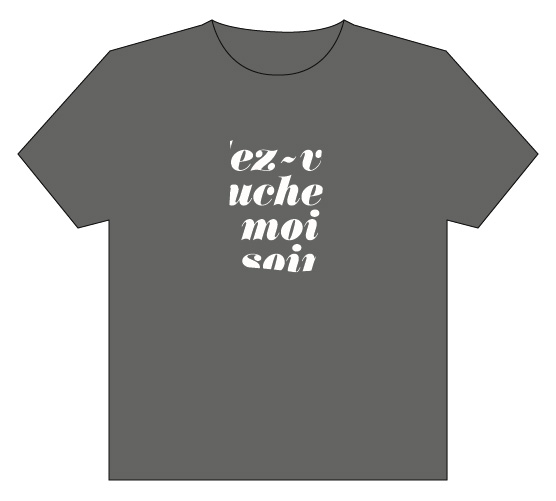
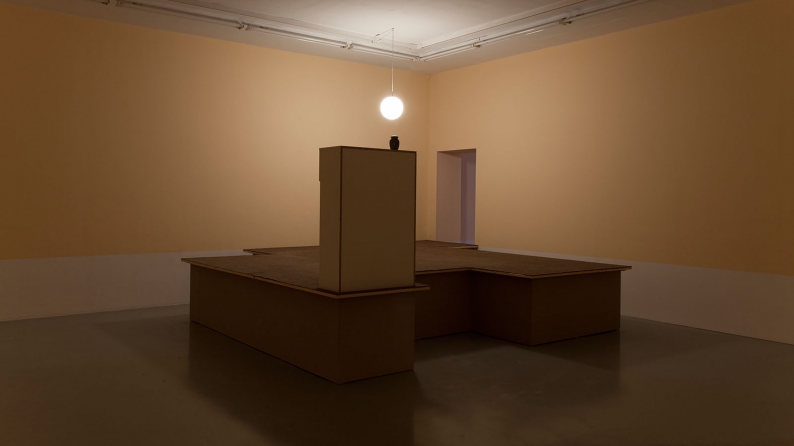



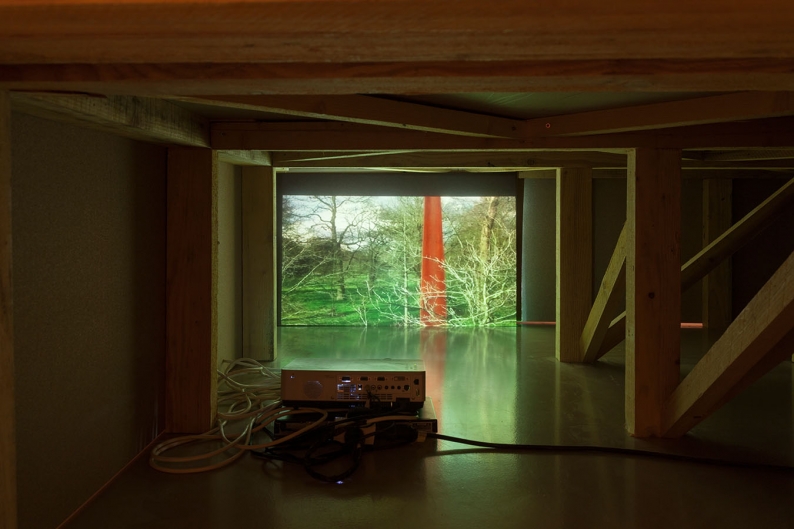





















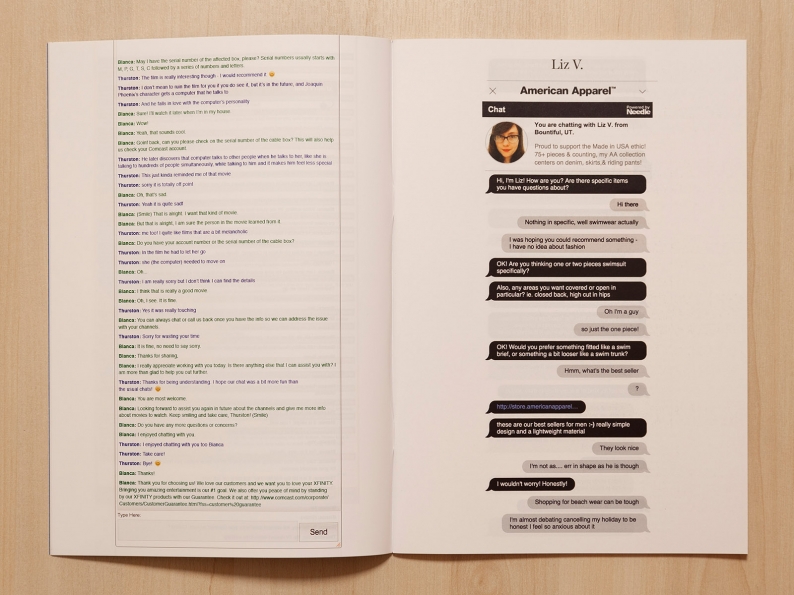


Photos : Steve Bishop
Photos : Steve Bishop
Noclip
Du 12 juin au 9 août 2015From 12 June to 9 August 2015
Hors les murs → Institut d'Art Contemporain
Institut d'Art Contemporain
11, rue du Docteur Dolard
FR-69100 Villeurbanne
NOCLIP
« Noclip » se traduirait en français par « passe muraille » mais comme souvent dans le jargon informatique l'anglais prévaut en termes d'usage et l'anglicisme demeure d'ailleurs plus judicieux et autrement évocateur. La traduction française quant à elle renvoie davantage au roman éponyme de la littérature fantastique — source qui n'a strictement aucun lien avec le présent projet.
« Noclip » provient spécifiquement de l'univers des jeux vidéos de tir à la première personne et il définit l'état physiquement « éthéré » d'un personnage qui a la capacité de passer à travers n'importe quel élément de l'architecture et dans le présent contexte il est le terme-clé auquel l'exposition personnelle de l'artiste canadien Steve Bishop emprunte son titre. Pourtant de prime abord, rien dans cette exposition n'évoque l'univers des jeux vidéos. Peut-être « noclip » est-il davantage familier aux générations nées entre les années 2000 et 1980, ces derniers ayant notamment connu les premiers jeux vidéo de tir comme par exemple le polémique Doom qui, mis à part le graphisme qui semble aujourd'hui des plus archaïques, procurait l'intense plaisir de pouvoir massacrer toutes sortes de créatures fantastiques hideuses.
Si vous êtes allés à droite...
Concernant une brève histoire de ce pendant de l'entertainment virtuel et certaines de ses caractéristiques techniques il est possible de se reporter à l'essai et à la compilation dialogues de Steve Bishop qui s'intitule Bonjour, comment puis-je vous aider ? et qui est distribuée gratuitement dans l'exposition. Elle peut aussi se consulter dans la salle d'attente prévue à cet effet.
Cette publication aurait aussi pu s'intituler Journal de Bord d'un Internaute Esseulé. Mais le point de vue « narratif » retenu par l'artiste, du moins en ce qui concerne le titre, se situe de l'autre côté de l'écran d'ordinateur. Les personnes avec qui l'artiste s'est entretenu demeurent indéfiniment réelles ou virtuelles (robots ou avatars) et elles sont celles avec qui tout un chacun peut potentiellement converser pour obtenir des renseignements.
Bonjour, comment puis-je vous aider ? émane de l'univers des services clients, assistance en ligne et autres chats (dialogues en ligne) qui répondent en direct à tout type de demande. Si l'on était sur un plateau télé on dirait que Steve Bishop a testé pour vous ces services marketing, et l'on ne serait d'ailleurs pas très loin de la réalité. L'artiste a en effet échangé régulièrement avec des services clients de diverses marques ou produits afin d'obtenir des conseils et d'enregistrer ces conversations qui d'une certaine manière parlent d'elles-mêmes. A priori tous les interlocuteurs sont réels, mais il est difficile de savoir dans quelle mesure ils répondent librement ou via des formules pré-écrites par une charte de bonne conduite commerciale. A de rares exceptions prêt ce cadre corporate limitatif point dès lors que les questions sont en passe de devenir quelque peu personnelles. De cet exercice de style aux multiples contraintes, il résulte un type de littérature en soi qui évoque autant le dialogue biaisé que Joaquin Phoenix entretient avec une voix off tout au long du film de Spike Jones, Her (2013), que la capacité d'un Georges Pérec a instauré des règles d'écriture et de styles strictes tout en fabulant sur des existences ou un quotidien somme toute infiniment banals.
Depuis la salle d'attente, il est possible de regarder une vidéo trouvée sur le site d'un fabricant de portes automatiques coulissantes. Réalisée dans divers entrées, lobbies et autres show-rooms dédiés à ce type de produits, elle entraîne le spectateur dans une rêverie éveillée où les portes s'ouvrent et se ferment sans fin, comme un ballet mécanique accompagné du mélo lancinant d'un morceau de piano. Malgré le clin d'oeil aux célèbres installations et architectures de miroirs sans tain de Dan Graham, c'est davantage l'humour d'un autre artiste, canadien lui aussi, Rodney Graham qui résonne avec cette mise en scène tant sincèrement habitée que drolatique.
Si vous êtes allés à gauche (ou que vous êtes allés à droite et que vous êtes maintenant sur la plateforme)...
A l'instar des portes automatiques qui dans la vidéo engendrent des effets d'optiques, une urne funéraire pour animal de compagnie tourne sur elle-même sur la plateforme. Cette sculpture rotative est placée sur un élément de mobilier bon marché. Il s'agit d'un objet étrange, ambigu, bibelot doté d'une charge affective ou simple sculpture de forme plutôt minimale ?
Son mouvement circulaire est à peine perceptible et contrairement aux portes transparentes de la salle adjacente, Holding Pattern II elle est réfléchissante, sa surface convexe diffracte la réalité renvoyant à la déformation ou à la dématérialisation de l'espace en mode « noclip » dans les jeux vidéos.
« Holding pattern » est un terme que l'artiste emprunte au domaine de l'aéronautique et qui désigne les boucles ou files d'attente des avions qui attendent l'autorisation d'atterrir. Holding Pattern II est ainsi une autre manière de parler de l'attente que ce soit au quotidien ou plus largement au cours de l'existence, l'urne funéraire peut aisément faire office de symbole métaphysique, une vanité somme toute contemporaine, peut-être trop évidente pour être prise au sérieux.
Ce que l'exposition NOCLIP parvient à relater avec subtilité et justesse est cette forme de démesure du sentiment, de perte d'échelle ou d'évolution certaine des affects qui caractérise notre époque, et cet état d'esprit anime véritablement toute l'exposition. L'exacerbation de projections personnelles sur des objets, le fétichisme voire l'animisme sont partie prenante de l'atmosphère d'ensemble qui se dégage de l'installation. Steve Bishop est éminemment critique quand il observe les bribes de cette mutation qui s'opère dans la fusion entre l'espace public médiatique et notre sphère domestique ou privée.
Caroline Soyez-Petithomme, commissaire de l'exposition
Hors les murs → Institut d'Art Contemporain
Institut d'Art Contemporain
11, rue du Docteur Dolard
FR-69100 Villeurbanne
NOCLIP
The word “noclip” comes specifically from the world of first person shooter video games, and defines the physically “ethereal” state of a person who is capable of passing through any architectural element. In this context, it is the key word which the Canadian artist Steve Bishop’s solo show borrows as its title. And yet, at first glance, visually speaking, nothing in this exhibition refers to the world of video games. Perhaps “noclip” is more familiar to generations born between the 2000s and 1980s, and in particular to those latest who grew up with the first shooter video games, for example the controversial Doom, whose graphics these days seem archaic, but which, back then, provided the intense pleasure of being able to massacre all sorts of hideous fantastic creatures.
If you turned right…
With regard to a short history of this counterpart of virtual entertainment and some of its technical features, it is possible to turn to Steve Bishop’s essay in the free publication titled Hello, How May I Help You? which is handed out free in the exhibition. It can also be read in the small lounge provided for the purpose.
This publication might also have been titled Logbook of a Lonesome Internet User. But the narrative viewpoint used by the artist, in any event for the title, is situated on the other side of the computer screen, and emanates from real or virtual people (robots and avatars), which whom anyone can potentially converse in order to obtain information. Hello, How May I Help You? refers to those customer services, online assistance, and other chats which claim to reply directly to any kind of request. The artist has in fact had regular exchanges with marketing services for various brands and products, to obtain advice and record these conversations which speak for themselves, which is not meant to be a bad pun. On the face of it, all the speakers are real, but you never really know, all the same, to what degree they are answering freely, by way of behavioural attitudes and formulae drafted by a charter of good commercial conduct. With just rare exceptions, this restrictive corporate framework appears as soon as the questions are on the point of becoming somewhat personal. What results from this stylistic exercise with its many different limitations is a type of literature that is, in the end, quite accomplished, and evokes both the biased dialogue which Joaquin Phoenix has with a voice-over throughout Spike Jones’s film Her, and the capacity of a writer like Georges Perec, who introduced writing rules and told tales about people with an altogether commonplace fate.
From this waiting room which orchestrates more or less all the letdown of an expectation of an extraordinary meeting, it is possible to watch a video found on a single manufacturers's website who makes these revolving and sliding doors. Made in various entrances, lobbies and showrooms dedicated to this type of product, it pulls the viewer into a waking dream in which see-through doors endlessly slide, like a sort of mechanical ballet accompanied by the throbbing tune of a piano piece. Despite the wink at Dan Graham’s famous installations and architectures made with two-way mirrors, it is rather the wit of another artist, also Canadian, Rodney Graham, which reverberates with this presentation that is as sincerely informed as it is funny.
If you turned left (or if you turned right and are now on the platform)…
Like those automatic doors which operate in a plastic way like potential surfaces for optical effects, intermittently creating illusions of volume, a pet animal’s funerary urn revolves on its own axis. This rotating sculpture is placed on a platform and, in addition, on a cheap piece of furniture which raises it higher, thus putting it out of reach, like a mysterious object or an ornament, or simply one prey to many other interpretations. The circular motion is perceptible and it heightens the doubt about a form, for which we struggle to make out whether it is hollow, a volume, or flat like an image. Unlike the see-through doors of the adjacent room, Holding Pattern II is, for its part, reflecting, its convex surface diffracts reality referring to the deformation or de-materialization of the space in “noclip” mode in video games. “Holding pattern” is an aeronautical term describing loops or queues of aircraft waiting for permission to land. Holding Pattern II is thus another way of talking about waiting (or expectation), be it in the daily round or more broadly during life; the funerary urn can easily act as a metaphysical symbol, a vanitas-like still life. But what NOCLIP manages above all to recount with subtlety and aptness is this form of excessive sentiment, loss of scale, and loss of a certain evolution of the affects which hallmark our day and age, and this spirit really does inform the entire show. The exacerbation of personal projections on objects, fetishism and even animism are part and parcel of the atmosphere of NOCLIP and of a change which resides somewhere in this merger between the media-related public place and our private domestic sphere.
Caroline Soyez-Petithomme, exhibition curator
Institut d'Art Contemporain
11, rue du Docteur Dolard
FR-69100 Villeurbanne
NOCLIP
The word “noclip” comes specifically from the world of first person shooter video games, and defines the physically “ethereal” state of a person who is capable of passing through any architectural element. In this context, it is the key word which the Canadian artist Steve Bishop’s solo show borrows as its title. And yet, at first glance, visually speaking, nothing in this exhibition refers to the world of video games. Perhaps “noclip” is more familiar to generations born between the 2000s and 1980s, and in particular to those latest who grew up with the first shooter video games, for example the controversial Doom, whose graphics these days seem archaic, but which, back then, provided the intense pleasure of being able to massacre all sorts of hideous fantastic creatures.
If you turned right…
With regard to a short history of this counterpart of virtual entertainment and some of its technical features, it is possible to turn to Steve Bishop’s essay in the free publication titled Hello, How May I Help You? which is handed out free in the exhibition. It can also be read in the small lounge provided for the purpose.
This publication might also have been titled Logbook of a Lonesome Internet User. But the narrative viewpoint used by the artist, in any event for the title, is situated on the other side of the computer screen, and emanates from real or virtual people (robots and avatars), which whom anyone can potentially converse in order to obtain information. Hello, How May I Help You? refers to those customer services, online assistance, and other chats which claim to reply directly to any kind of request. The artist has in fact had regular exchanges with marketing services for various brands and products, to obtain advice and record these conversations which speak for themselves, which is not meant to be a bad pun. On the face of it, all the speakers are real, but you never really know, all the same, to what degree they are answering freely, by way of behavioural attitudes and formulae drafted by a charter of good commercial conduct. With just rare exceptions, this restrictive corporate framework appears as soon as the questions are on the point of becoming somewhat personal. What results from this stylistic exercise with its many different limitations is a type of literature that is, in the end, quite accomplished, and evokes both the biased dialogue which Joaquin Phoenix has with a voice-over throughout Spike Jones’s film Her, and the capacity of a writer like Georges Perec, who introduced writing rules and told tales about people with an altogether commonplace fate.
From this waiting room which orchestrates more or less all the letdown of an expectation of an extraordinary meeting, it is possible to watch a video found on a single manufacturers's website who makes these revolving and sliding doors. Made in various entrances, lobbies and showrooms dedicated to this type of product, it pulls the viewer into a waking dream in which see-through doors endlessly slide, like a sort of mechanical ballet accompanied by the throbbing tune of a piano piece. Despite the wink at Dan Graham’s famous installations and architectures made with two-way mirrors, it is rather the wit of another artist, also Canadian, Rodney Graham, which reverberates with this presentation that is as sincerely informed as it is funny.
If you turned left (or if you turned right and are now on the platform)…
Like those automatic doors which operate in a plastic way like potential surfaces for optical effects, intermittently creating illusions of volume, a pet animal’s funerary urn revolves on its own axis. This rotating sculpture is placed on a platform and, in addition, on a cheap piece of furniture which raises it higher, thus putting it out of reach, like a mysterious object or an ornament, or simply one prey to many other interpretations. The circular motion is perceptible and it heightens the doubt about a form, for which we struggle to make out whether it is hollow, a volume, or flat like an image. Unlike the see-through doors of the adjacent room, Holding Pattern II is, for its part, reflecting, its convex surface diffracts reality referring to the deformation or de-materialization of the space in “noclip” mode in video games. “Holding pattern” is an aeronautical term describing loops or queues of aircraft waiting for permission to land. Holding Pattern II is thus another way of talking about waiting (or expectation), be it in the daily round or more broadly during life; the funerary urn can easily act as a metaphysical symbol, a vanitas-like still life. But what NOCLIP manages above all to recount with subtlety and aptness is this form of excessive sentiment, loss of scale, and loss of a certain evolution of the affects which hallmark our day and age, and this spirit really does inform the entire show. The exacerbation of personal projections on objects, fetishism and even animism are part and parcel of the atmosphere of NOCLIP and of a change which resides somewhere in this merger between the media-related public place and our private domestic sphere.
Caroline Soyez-Petithomme, exhibition curator

Noclip, 2015
Carton d'invitation
La Salle de bains reçoit le soutien du Ministère de la Culture DRAC Auvergne-Rhône-Alpes,
de la Région Auvergne-Rhône-Alpes et de la Ville de Lyon.
Cette exposition a reçu le soutien du Centre culturel canadien, et des galeries Carlos/Ishikawa, Londres et Supportico Lopez, Berlin.
de la Région Auvergne-Rhône-Alpes et de la Ville de Lyon.
Cette exposition a reçu le soutien du Centre culturel canadien, et des galeries Carlos/Ishikawa, Londres et Supportico Lopez, Berlin.
















